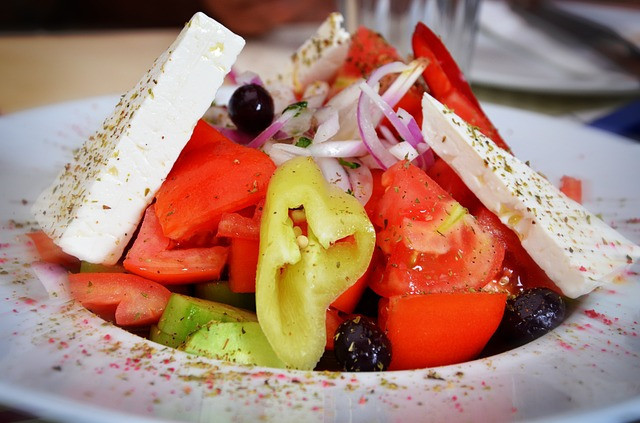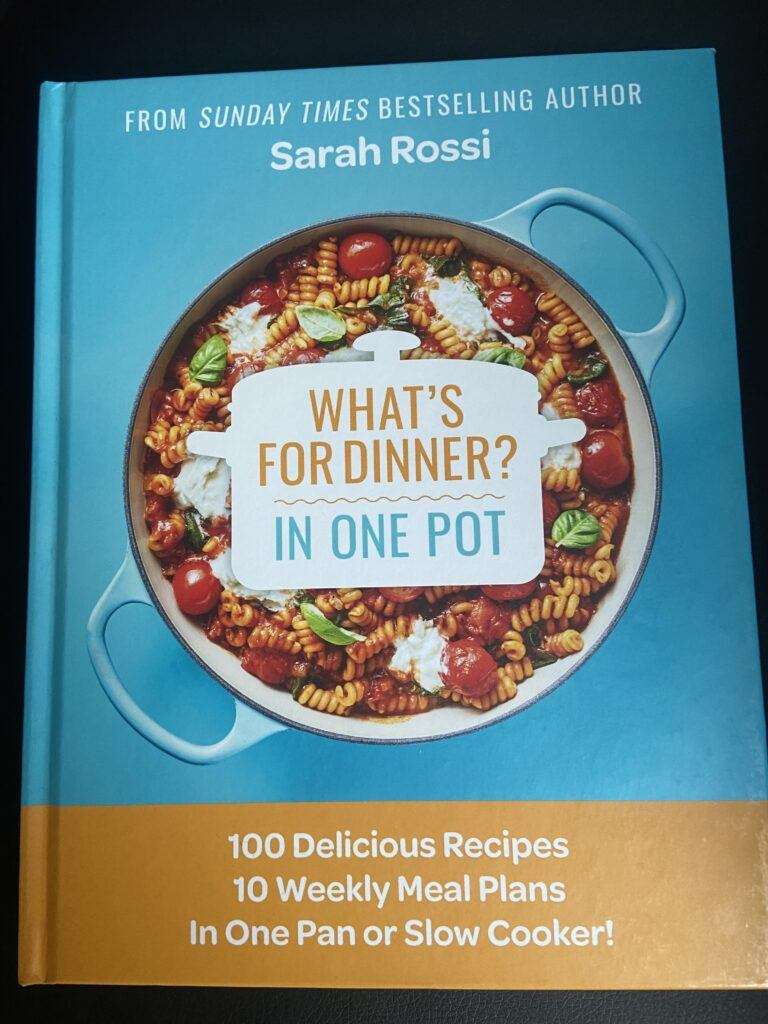This article gives you the formula for How to Lose Five Pounds in a Month. If you are wondering why five pounds? It’s realistic and a steady weight loss. If you are feeling bloated or just want to improve your lifestyle then you have come to the right place.
We will cover the Mediterranean diet as it is often considered one of the healthiest in the world. It has various health benefits, including reducing the risk of heart disease, stroke and certain types of cancer, as well as promoting weight loss and longevity.
You can also check out the sample meal plan that focuses on balance and includes a variety of nutrients.
We have even included some beginner friendly exercise suggestions to help boost your metabolism further.
Calculate Your Daily Needs
To lose one pound of body weight, you need to create a calorie deficit of approximately 3,500 calories. Therefore, to lose five pounds in a month, you would need to create a calorie deficit of around 17,500 calories (5 pounds x 3,500 calories per pound).
Working on the basis that there are approximately 30 days in a month, you would need to create a calorie deficit of approximately 583 calories (17,500 calories / 30 days) . This means you would consume 583 calories less than your daily calorie needs for weight maintenance.
It is important to note that creating too large of a calorie deficit can be unsustainable and may lead to muscle loss or nutrient deficiencies. It is generally recommended to aim for a gradual and sustainable weight loss of 1-2 pounds per week. Therefore, it may be more realistic and healthier to aim for a calorie deficit of around 250-500 calories per day to lose five pounds in a month,
Healthy Sample Meal Plan
Unsure on what to eat to help you lose weight?
This meal plan focuses on balance and includes a variety of nutrients.
Breakfast
- Greek yoghurt topped with mixed berries and a sprinkle of nuts, and a drizzle of honey.
- Whole grain toast with avocado and a poached egg,
- Herbal tea or black coffee
Snack
Apple slices with almond butter
Lunch
Grilled chicken breast with a side of quinoa and roasted vegetables (such as broccoli, bell peppers, and carrots)
Mixed green salad with cherry tomatoes, cucumber, and a light vinaigrette dressing
Water or unsweetened iced tea

Snack
Carrot sticks with hummus
Dinner
Baked salmon with a lemon-dill sauce
Steamed asparagus and roasted sweet potatoes
Whole grain dinner roll
Sparkling water with a slice of lemon
Snack
Greek yoghurt with a sprinkle of granola and sliced banana.
This meal plan includes a balance of lean protein (chicken breast, salmon, Greek yoghurt) whole grains (quinoa, whole grain toast, whole grain dinner roll), healthy fats (avocado, nuts, almond butter), and plenty of fruits and vegetables. It also incorporates a variety of flavours and textures to keep meals interesting. Remember to adjust portion sizes based on your individual calorie needs and consult with a healthcare professional or dietician for personalized advice.
Beginner Friendly Exercises
Try the below exercises to help you lose five pounds in a month;
Walking
Walking is a low-impact exercise that can be easily incorporated into your daily routine. Start with shorter distances and gradually increase your time and speed.
Jogging / Running
If you’re looking for higher intensity exercise, jogging or running can be a great option. Start with intervals of jogging and walking, gradually increasing the jogging time as your fitness improves.
Cycling
Cycling is a low- impact exercise that can be done outdoors or on a stationary bike. It helps improve cardiovascular fitness and strengthens the lower body muscles.
Bodyweight Exercises
Bodyweight exercises are great for building strength and can be done anywhere. Some examples include squats, lunges, push-ups, planks, and burpees. Start with a few repetitions and gradually increase as you get stronger.
Yoga
Yoga is a gentle exercise that focuses on flexibility, balance, and relaxation. It can help improve strength, flexibility and reduce stress. Look for beginner -friendly yoga classes or follow online tutorials.
Swimming
Swimming is a low- impact exercise that works the entire body. It is gentle on the joints, and can help improve cardiovascular fitness. If you’re new to swimming, consider taking lessons to learn proper technique.
Group Fitness Classes
Join a beginner -friendly group fitness class, such as Zumba, aerobics, or dance classes, can be a fun way to get active and meet new people. These classes are usually designed to accommodate different fitness levels.
Remember to start slowly and listen to your body. It’s important to warm up before exercising, cool down afterward, and gradually increase the intensity and duration of your workouts. If you have any underlying health conditions or concerns, it’s always a good idea to consult with a healthcare professional before starting a new exercise program.
The Mediterranean Diet
The Mediterranean diet is a way of eating that is inspired by the traditional dietary patterns of countries bordering the Mediterranean Sea, such as Greece, Italy, Spain, and Morocco. Its based around whole foods with minimal processing and has been associated with numerous health benefits.
Fruits & Vegetables
The Mediterranean diet encourages the consumption of a variety of fruits and vegetables, which are rich in vitamins and minerals, and antioxidants. Aim for at least five servings of fruits and vegetables per day.
Wholegrains
Wholegrains like whole wheat, oats, barley, and brown rice are staples in the Mediterranean diet. They provide fiber, vitamins, and minerals. Choose whole grain bread, pasta and cereals over refined grains.
Healthy fats
The Mediterranean diet emphasizes the consumption of healthy fats such as olive oil, nuts, and sees. These fats are rich in monounsaturated fats and polyunsaturated fats, which are beneficial for heart health. Limited saturated and trans fats.
Legumes & pulses
Beans, lentils, and chickpeas are excellent sources of plat-based protein, fiber, and other nutrients. They are commonly consumed in the Mediterranean diet.
Fish & seafood
Especially fatty fish like salmon, mackerel, and sardines, are rich in omega- 3 fatty acids. Aim to include fish in your diet at least twice a week.
Moderate consumption of poultry, eggs, and dairy
Poulty, eggs, yoghurt and cheese can be included in moderation in the Mediterranean diet. Choose lean cuts of poultry and opt for low-fat or Greek yoghurt.
Limited red meat
Red meat is consumed in modration in the Mediterranean diet. It is often reserved for special ocassions. Instead focus on plant-based protein sources and leaner meats like poultry and fish.
Herbs & spices
The Mediterranean diet relies on herbs and spices to add flavourto dishes instead of using excessive amounts of salt. Common herbs and spices used include basil, oregano, rosemary, garlic, and cinnamon.
Red wine in moderation
For thos that drink alcohol moderate consumption of red wine is approximately one glass of wine a day for women and up to two glasses for men.
It’s always a good idea to consult with a healthcare rocessional of registered dietician for personalised advice.
One Pot Meals & Home Slimming Recipes
What’s for Dinner? In One Pot 100 Delicious Recipes, 10 Weekly Meal Plans, In One Pan or Slow Cooker! Hardcover – 28 Sept. 2023

If you are looking for meal inspo look no further. This book contains daily menus, shopping lists, nutritional information with photos of dishes that includes vegetarian options, desserts and snacks. Everything goes into one pot. How hard can it be?

The #1 fastest selling non-fiction book in the UK!
Slimming-friendly food has never tasted so good; the must-have first cookbook from Pinch of Nom, the UK’s most visited food blog.
As an Amazon Affiliate I earn from qualifying purchases.
How To Lose Five Pounds in a Month
To lose five pounds in a month, it is important to create a calorie deficit by consuming fewer calories than you burn.
Calculate your daily calorie needs
Use an online calculator to determine your daily calorie needs then subtract 500-700 calories to create calorie deficit. Try the one below;
Eat a balanced diet
Focus on nutrient dense foods that provide essental vitamins, minerals and fiber. Include a variety of fruits, vegetables, whole grains, lean proteins, and healthy fats in your meals.
Portion Control
Use smaller plates and bowls to control your portion sizes visually.
Increase protein intake
Protein helps you to feel full and satisfied. Include lean sources of protein such as chicken breast, fish, tofu, beans, and Greek yoghurt in your meals.
Limit processed foods & added sugars
Minimise your intake of processed foods, sugary snacks, sodas ans sugary beverages. These foods are often high in calories and low in nutrients.
Stay hydrated
Drink plenty of water throughout the day to stay hydrated and control your appetite. Avoid sugary drinks and opt for water, herbal tea, or infused water instead.
Plan your meals and snacks
Avoid impulsive food choices instead choose a combination of healthy fats, and fiber in each meal to keep you satisfied.
Exercise
Incorporate 150 minutes of moderate intensity aerobic exercise into your week for weight loss. Alternatively 75 minutes of vigorous intensity activity a week.
Monitor your progress
Keep a track of your food intake and exercise routine to stay accountable. Regularly weigh yourself to track your progress and make adjustments if needed.
Please feel free to leave me a comment below
I look forward to hearing all about your progress
Take Care
Caroline

